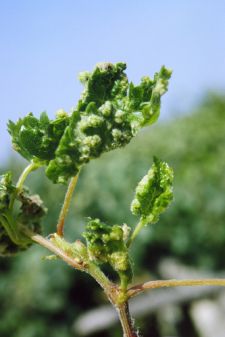Food-Info.net> Food Products > Wine
A Short History of Wine
To make wine, grapes, which belong to the genus Vitis are used. One of the species, V. vinifera (often erroneously called the European grape), is predominantly used. Beverages produced from V. labrusca , the native American grape, and from other grape species are also considered wines. When other fruits are fermented to produce a kind of wine, the name of the fruit is included, as in the terms peach wine and blackberry wine.
History and spread of viticulture
Vitis vinifera was being cultivated in the Middle East by 4000 BC, and probably earlier. Egyptian records dating from 2500 BC refer to the use of grapes for wine making, and numerous Old Testament references to wine indicate the early origin and significance of the industry in the Middle East.
The Greeks carried out an active wine trade and planted grapes in their colonies from the Black Sea to Spain. The Romans carried the practice of grape growing into the valleys of the Rhine and Moselle (which became the great regions of Germany and Alsace), the Danube (in modern-day Romania, Yugoslavia, Hungary, and Austria), and the Rhône, Saône, Garonne, Loire, and Marne (which define the great French regions of Rhône, Burgundy, Bordeaux, Loire, and Champagne, respectively). The role of wine in the Christian mass helped maintain the industry after the fall of the Roman Empire, and monastic orders preserved and developed many of the highly regarded wine-producing areas in Europe.
Following the voyages of Columbus, grape culture and wine making were transported from the Old World to the New. Spanish missionaries took viticulture to Chile and Argentina in the mid-16th century and to lower California in the 18 th century. With the flood of European immigration in the 19th and early 20th centuries, modern industries, based on imported V. vinifera grapes, were developed. The prime wine-growing regions of South America were established in the foothills of the Andes Mountains. In California, the centre of viticulture shifted from the southern missions to the Central Valley and the northern counties of Sonoma, Napa, and Mendocino. British settlers planted European vines in Australia and New Zealand in the early 19th century, and Dutch settlers took grapes from the Rhine region to South Africa as early as 1654.
The introduction of the eastern American root louse, phylloxera, seriously threatened wine industries around the world between 1870 and 1900, destroying vineyards almost everywhere that V. vinifera was planted, especially in Europe and parts of Australia and California. To combat this parasite, V. vinifera scions (detached shoots including buds) were grafted to species native to the eastern United States, which proved almost completely resistant to phylloxera. After the vineyards recovered, European governments protected the reputations of the great regions by enacting laws that allotted regional names and quality rankings only to those wines produced in specific regions under strictly regulated procedures. In recent times, present-day wine-producing countries have passed similar regulations.

Phylloxera on grape leaf (Source)
Further reading :
More wine info:




